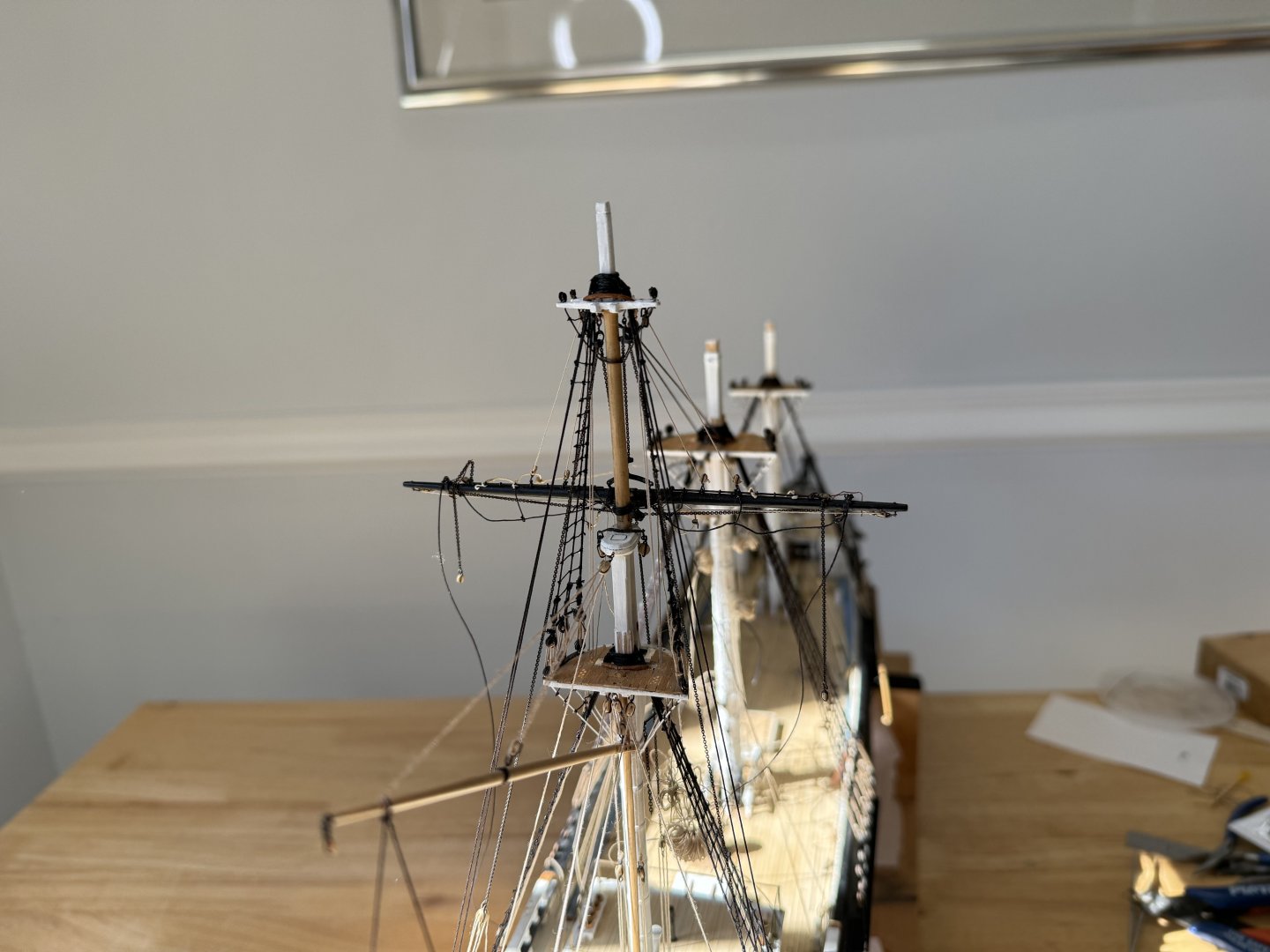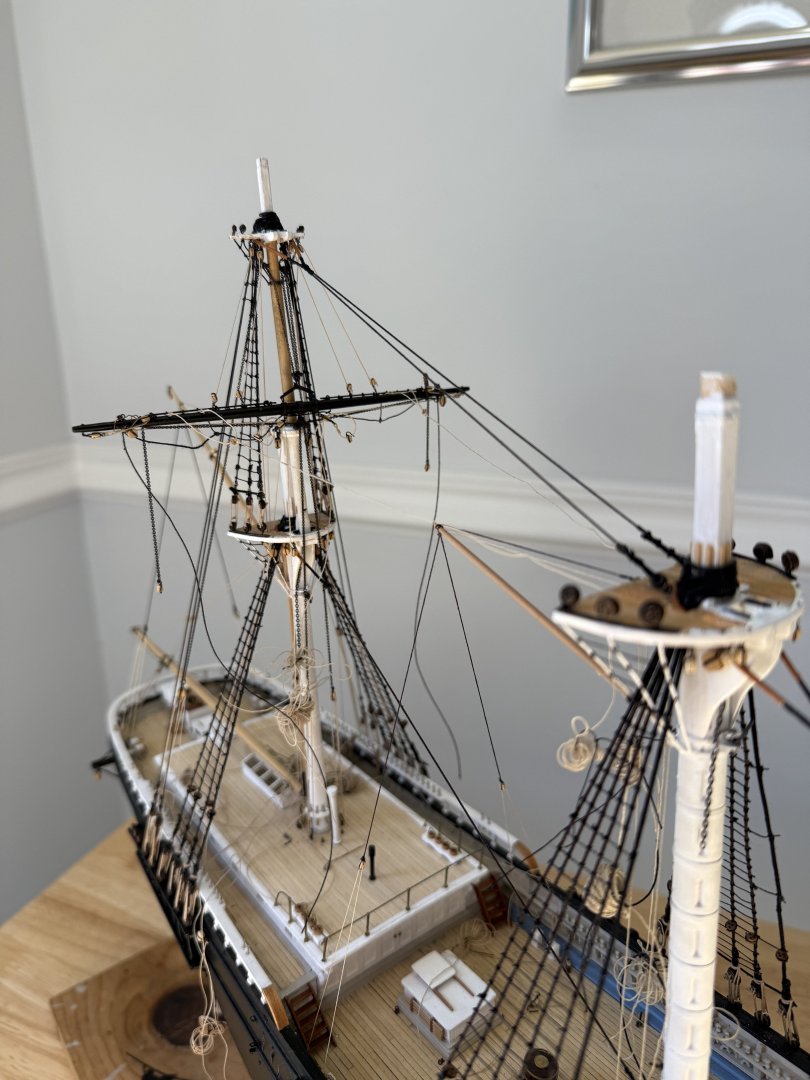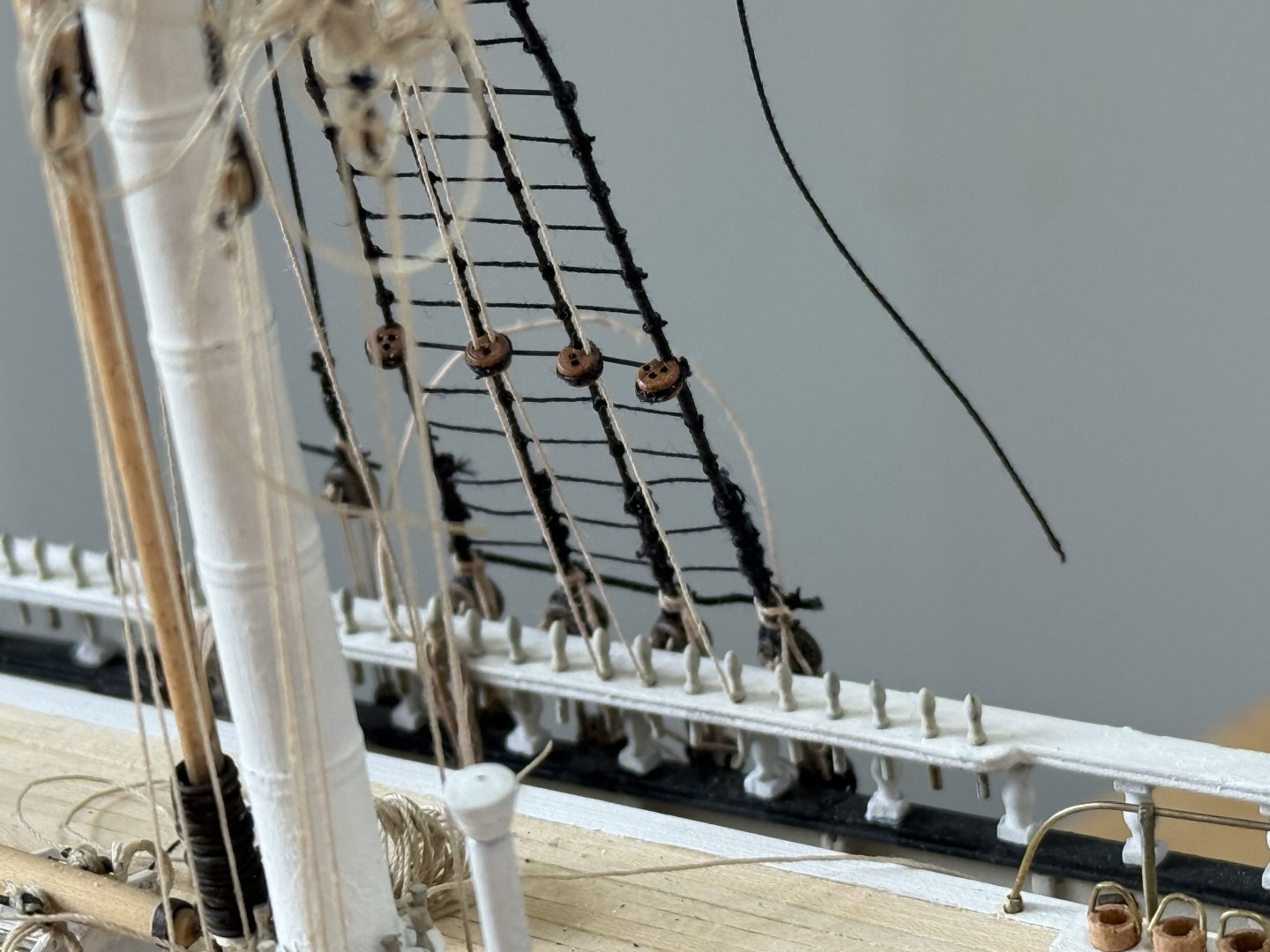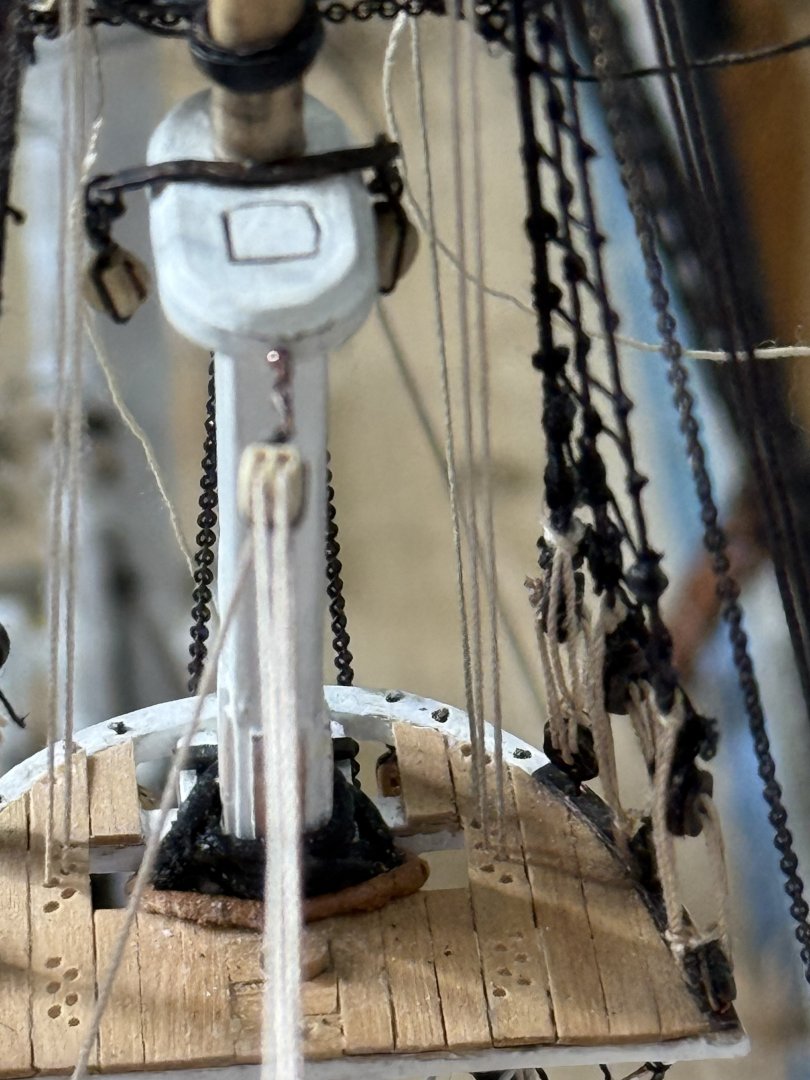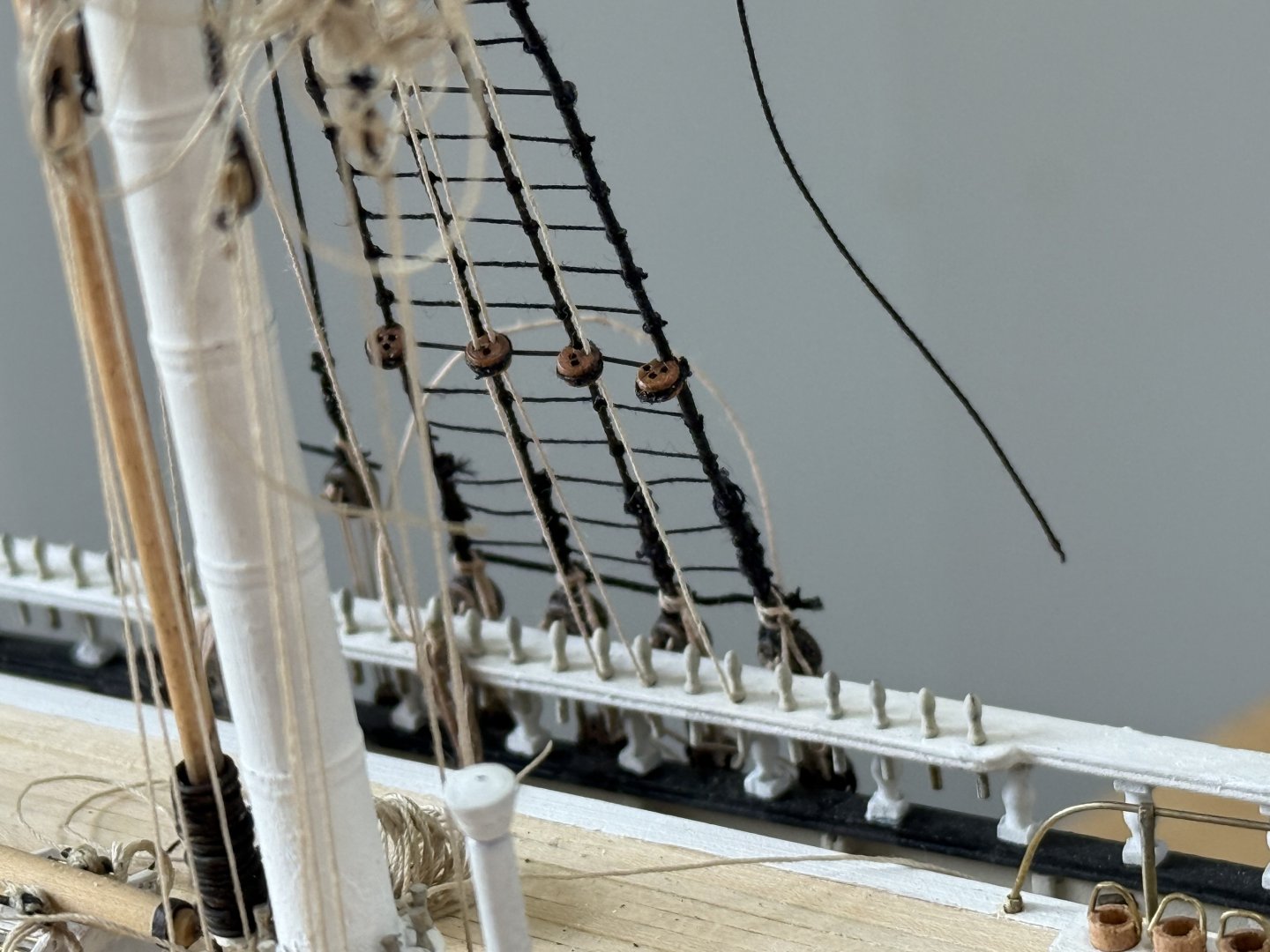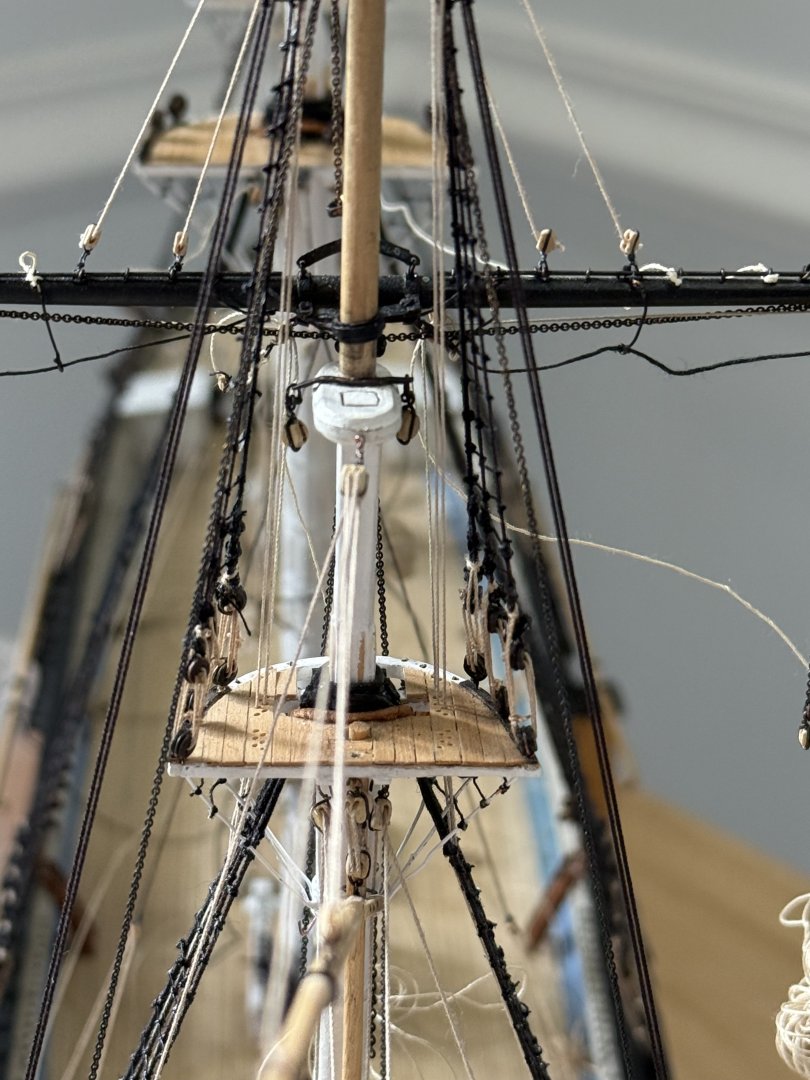
Rick310
NRG Member-
Posts
753 -
Joined
-
Last visited
Content Type
Profiles
Forums
Gallery
Events
Everything posted by Rick310
-
George, sorry it has taken so long to get back to you! After filing a groove in the deadeyes/fairlead with a round diamond file, I glued black thread in the groove on the inward side of the fairlead (away from the shroud). I used titebond wood glue. When that had set, I wrapped the thread in the groove around the shroud and tied an over hand knot. Then I wrapped the thread back round the fairlead and tied another over hand knot that was then glued with cyano. I found the failed would still rotate around the shroud, so to keep them in place, I touched them with a drop of cyano to the shroud. Sorry for the long explanation! Rick
- 343 replies
-
- Flying Fish
- Model Shipways
-
(and 1 more)
Tagged with:
-
This is a really great build Keith!! Amazing detail at such a small scale! Rixk
- 457 replies
-
- sternwheeler
- Hard Coal Navy
-
(and 1 more)
Tagged with:
-
Keith, I have no intention of quitting!! My wife and family would murder me !! Rick
- 343 replies
-
- Flying Fish
- Model Shipways
-
(and 1 more)
Tagged with:
-
As an aside, I had to take the spreaders off all 3 cross trees as the opening for the shrouds, backstays and stay, especially if the shrouds are served. This involved soaking the spreaders with acetone for 20-30 minutes and carefully prying them off the cross trees , trying not to break them. For anyone making this model, I recommend not attaching the spreaders until the top masts are rigged. Even with the spreaders removed, there really isn’t enough room for the shrouds and backstays. Rick
- 343 replies
-
- Flying Fish
- Model Shipways
-
(and 1 more)
Tagged with:
-
Thanks for the encouragement Jared! Rick
- 343 replies
-
- Flying Fish
- Model Shipways
-
(and 1 more)
Tagged with:
-
Keith, I lie to myself all the time, that I can actually finish this build. Rick
- 343 replies
-
- Flying Fish
- Model Shipways
-
(and 1 more)
Tagged with:
-
Very true!! I told myself that rigging would be easier so I wouldn’t get overwhelmed! Rick
- 343 replies
-
- Flying Fish
- Model Shipways
-
(and 1 more)
Tagged with:
-
This guy s a really nice build and you are doing a great job!! Beautiful attention to detail!! Rick
- 91 replies
-
- Cutty Sark
- Sergal
-
(and 1 more)
Tagged with:
-
Thanks Nic! I keep waiting for this to get easier! Rick
- 343 replies
-
- Flying Fish
- Model Shipways
-
(and 1 more)
Tagged with:
-
Finally finished rigging the mizzen topmast. This included the shrouds, lanyards, backstays and the ratlines and the mizzen topmast stay. I also finished rigging the mizzen topsail reef line, and the bunt and leech lines. These are not yet permanently secured to their belaying pins. The topsail bowlines were also temporarily run to their blocks on the aft side of the main top to get them out of the way for the time being. One major flaw with the plans, in my opinion, is the lack of information on which lines run through which holes in the fairleads in the top and on the shrouds. Also, the plans fail to show accurately the relationship of the pins in the rack rail to the shrouds. This often results in a specific pin not being as close to the shroud fairlead to insure a straight path. The result is that I have to modify which lines are belaying to which pins. I am not able to follow the belaying diagram which I’m sure was based on accepted practice. This probably explains why I had to run the mizzen peak halyard aft due to interference with the mizzen top. The run of the bowlines are my interpretation base largely on the Flying cloud model at the Boston Fine Art Museum. May be wrong but seem logical to me knowing that the run of the bowlines had to be such that they would not interfere when lowering the yard quickly, same as the braces. If anyone has any thoughts, I would love to hear them!
- 343 replies
-
- Flying Fish
- Model Shipways
-
(and 1 more)
Tagged with:
-
According to the plans for the flying fish, only the fore and main topsail yards, had Flemish horses. Rick
- 178 replies
-
- Flying Cloud
- Mamoli
-
(and 1 more)
Tagged with:
-
Incredibly well done Keith!! Looks superb!! Rick
- 457 replies
-
- sternwheeler
- Hard Coal Navy
-
(and 1 more)
Tagged with:
About us
Modelshipworld - Advancing Ship Modeling through Research
SSL Secured
Your security is important for us so this Website is SSL-Secured
NRG Mailing Address
Nautical Research Guild
237 South Lincoln Street
Westmont IL, 60559-1917
Model Ship World ® and the MSW logo are Registered Trademarks, and belong to the Nautical Research Guild (United States Patent and Trademark Office: No. 6,929,264 & No. 6,929,274, registered Dec. 20, 2022)
Helpful Links
About the NRG
If you enjoy building ship models that are historically accurate as well as beautiful, then The Nautical Research Guild (NRG) is just right for you.
The Guild is a non-profit educational organization whose mission is to “Advance Ship Modeling Through Research”. We provide support to our members in their efforts to raise the quality of their model ships.
The Nautical Research Guild has published our world-renowned quarterly magazine, The Nautical Research Journal, since 1955. The pages of the Journal are full of articles by accomplished ship modelers who show you how they create those exquisite details on their models, and by maritime historians who show you the correct details to build. The Journal is available in both print and digital editions. Go to the NRG web site (www.thenrg.org) to download a complimentary digital copy of the Journal. The NRG also publishes plan sets, books and compilations of back issues of the Journal and the former Ships in Scale and Model Ship Builder magazines.







